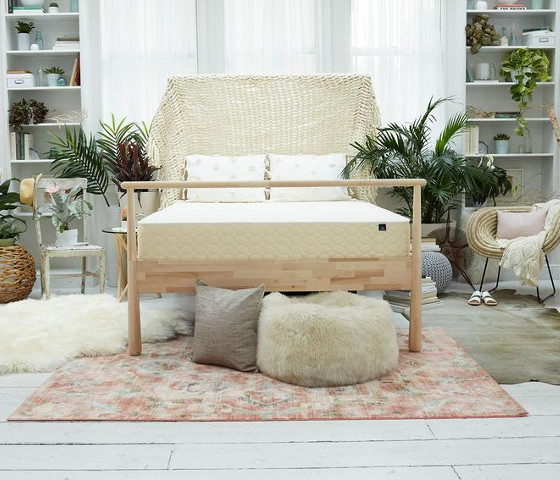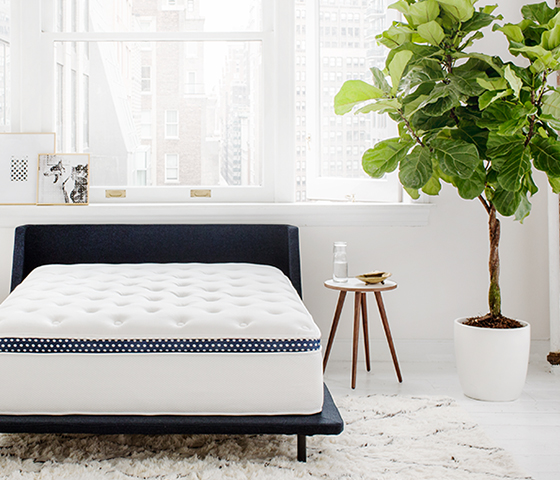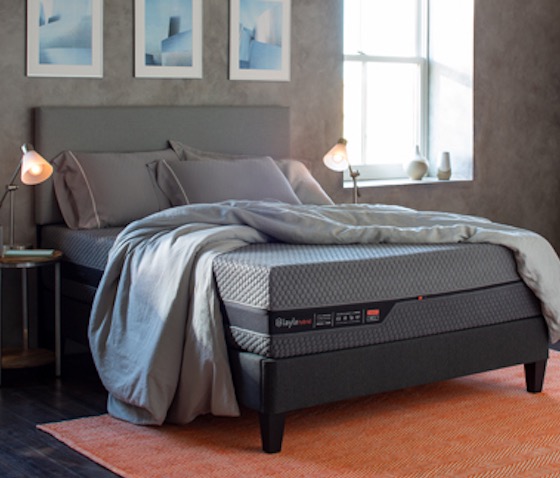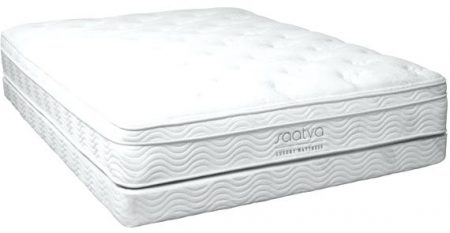Mattresses and Bedding for People with Allergies
Below, you’ll find our recommendations for sleep products that provide the best resistance to dust mites, mold, mildew, and other allergens.
Best Mattresses for Allergies
While most mattresses sold today are made from allergen-resistant materials and fabrics, some are more effective at preventing the buildup of dust mites, mold, and mildew.
Memory foam mattresses are all-foam models. The comfort layers – and sometimes the transitional layers – are made of viscoelastic polyurethane foam, or memory foam. This material softens when exposed to body heat, allowing it to conform closely to the body, and then it returns to its original shape when the heat is removed. This creates the characteristic “body hug” many associate with memory foam. The support layers of these beds are made from high-density polyfoam, which provides stability for the entire mattress.
All-latex mattresses feature comfort and support layers made of latex, a material derived from the sappy extract of rubber trees. Latex gently conforms to the body without sinking too much, making it a good alternative to memory foam for people who don’t enjoy the body hug sensation. Latex also retains less heat and typically sleeps cooler than memory foam.
Both memory foam and latex are resistant to dust mites, mold, and mildew. They contain layers of solid material where it is more difficult for allergens to accumulate. Those who enjoy a close, body-cradling feel from their mattress should opt for a memory foam bed. The same goes for people with latex allergies (more on that further down). People who sleep hot and/or want more moderate contouring may want to consider an all-latex model instead.
On the other hand, innerspring mattresses tend to attract more allergens. This can be attributed to their open coil systems, which feature nooks and crannies where dust mites, mold, and mildew can thrive. Hybrids also feature coil systems but their memory foam and/or latex layers provide more resistance to allergens than the thin polyfoam layers found in most innersprings.
With innersprings and hybrids, regular vacuuming is more important. This ensures allergens don’t accumulate too much through the bed’s interior. Owners should also purchase a dust mite resistant zip-off cover for added protection. For those who use a box spring with any type of mattress, we recommend a washable cover for this component, as well.
Best Pillows for Allergies
As with mattresses, the best pillows for people with allergies include memory foam and latex models because these materials resist common allergens. Another option for allergy sufferers is a buckwheat pillow, which is filled with the hard hulls that encase buckwheat seeds. Some people have buckwheat allergies, but these cases are not very common.
People with allergies may want to avoid pillows with down and/or feathers from ducks and geese unless they’ve received antimicrobial treatments. Down and feathers may contain dander that triggers allergy symptoms, and these materials are also vulnerable to dust mite buildup.
Washable pillows are the easiest to keep clean, especially if the inner components can also be laundered in a machine. Owners may want to invest in a pillowcase in addition to the built-in cover for added protection against allergens.
Best Sheets for Allergies
Most fabrics used to construct sheets pose little allergy risk to sleepers, but some manufacturers treat their sheets with chemicals and dyes that can trigger allergy symptoms. Inquire about whether a sheet set is hypoallergenic before purchasing, since there’s no way to protect sheets with a cover as one might with their mattress or pillow.
Some hypoallergenic sheet options include:
- Rayon from bamboo, an exceptionally breathable and silky-soft material that also resists mold, mildew, and dust mites.
- Silk, which is both luxuriously soft and naturally hypoallergenic.
- Pure cotton, another natural, breathable material that resists allergens very well.
- Wool, a breathable and moisture-wicking material that provides excellent protection against dust mites.
A Word About Latex Allergies
Mattresses and pillows with latex can trigger allergies in people with latex allergies, but it’s worth noting this type of allergy is quite rare. The AAFA estimates fewer than 1 percent of adults and children in the U.S. have an allergy to latex. Furthermore, this allergy is most often found in niche populations, including children with spina bifida, young people who undergo frequent medical treatments or procedures, and healthcare workers who regularly use latex gloves.
As rare as latex allergies are, they should definitely preclude someone from considering a sleep product containing latex. People with latex allergies can experience moderate to severe symptoms when exposed to the material. These may include itchy or swollen skin or lips, hives, inflammation of the eyes, and – in serious cases – anaphylaxis. People who have latex allergies or suspect as much should avoid latex-based bedding items unless they’ve been told otherwise by a credentialed medical professional.








